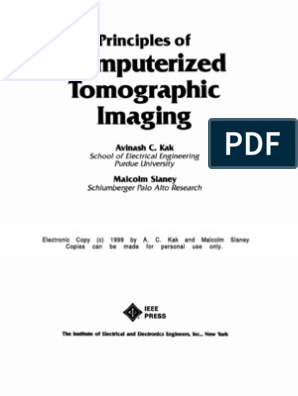Topic #8: Spectroscopy Techniques
Photon in, Electron out Photoemission Spectroscopy (PES) X-ray Photoemission Spectroscopy (XPS - 200 to 2,000 eV source) Ultraviolet Photoemission Spectroscopy (UPS - 10 to 50 eV source) Auger Electron Spectroscopy (AES) - also possible! Electron in, Electron out (inelastic) Auger Electron Spectroscopy (AES) Electron Energy Loss Spectroscopy (EELS) Photon in, Photon out X-ray Absorption Spectroscopy (XAS) Extended X-ray Absorption Fine Structure (EXAFS)
Phys 661 - Baski
Spectroscopy Techniques
Page 1
�Electron Spectroscopy: Survey Scan (PES+AES)
PES Lines
Auger Lines
Electron energy spectrum of Ni due to 1.25 keV photon (Mg Ka). X-axis = binding energy = hv - E(kinetic) Y-axis = N(E)/E because admittance of spectrometer decreases as 1/E.
Phys 661 - Baski Spectroscopy Techniques Page 2
�Electron Spectroscopy: Mean Free Path
Schematic of energetic photons incident on a surface and creating characteristic electrons relatively deep in the solid. Only electrons created near the surface escape with no loss of energy.
Phys 661 - Baski
Spectroscopy Techniques
Page 3
�Electron Spectroscopy: Mean Free Path
Universal curve for electron mean free path with a minimum near 50 eV.
Phys 661 - Baski Spectroscopy Techniques Page 4
�Electron Spectroscopy: Energy Detectors
Single-pass CMA
Double-pass CMA
Cylindrical Mirror Analyzers (CMA) use an electrostatic field to guide electrons with a specific energy to the detector.
Phys 661 - Baski
Spectroscopy Techniques
Page 5
�Electron Spectroscopy: Energy Detectors
CHA Channel Plate
Concentric Hemispherical Analyser (CHA) operates on principle similar to CMA, but with a different geometry. Channel Plate Analyzer spatially images electron intensity from the sample at each given energy.
Phys 661 - Baski Spectroscopy Techniques Page 6
�PES/XPS: Apparatus
X-ray Photoelectron Spectroscopy (XPS) consists of an x-ray source (Mg-1254 eV, Al-1487 eV) that bombards a sample and a detector for measuring the energies of the emitted electrons.
Phys 661 - Baski Spectroscopy Techniques Page 7
�PES/XPS: Survey Scan
Survey scan of Pd over large energy range shows relative intensities of 3d, 3p, and 3s energy levels.
Taken from www.chem.qmw.ac.uk/surfaces/scc/scat5.htm
Phys 661 - Baski Spectroscopy Techniques Page 8
�Synchrotron PES: High Resolution Data
Ge 3d Core Level Valence Band
Data from John Phys 661 - Baski
Carlisle (VCU 2000).Spectroscopy Techniques
Page 9
�PES/XPS: Energy Level Basics
Energy Diagram PES/XPS Spectra
Phys 661 - Baski
Spectroscopy Techniques
Page 10
�Background: Orbital Angular Momentum l
n 1 2
l = 0 (s) l = 1 (p)
l = 2 (d)
3 4 5
6 7
l = 3 (f)
Phys 661 - Baski
Spectroscopy Techniques
Page 11
�Background: Spin-Orbit Energy Levels
Spin-Orbit Zeeman mj = 3/2 mj = 1/2 mj = 1/2 mj = 3/2 mj = 1/2 mj = 1/2 j = 1/2
j = 3/2 l = 1 (p) s = 1/2
j l s, l s m j j, j 1,... j 1, j
l = 0 (s) s = 1/2 j = 1/2
Phys 661 - Baski Spectroscopy Techniques
mj = 1/2
mj = 1/2
Page 12
�PES/XPS: Energy Level Basics
j
1S1/2 1/2 2S1/2 1/2,3/2 2P1/2, 2P3/2
n=1 n=2 Spin-Orbit Splitting
n=3
Phys 661 - Baski
Spectroscopy Techniques
Page 13
�PES/XPS: Binding Energy Values
Binding energies of K (n = 1), L (n = 2), M (n = 3), and N shells
Phys 661 - Baski Spectroscopy Techniques Page 14
�PES/XPS: Binding Energy Cross Sections
2p 1s 3d 4f
Calculated cross sections (1.5 keV photon energy) give probabilities for observing electrons from various energy levels.
Phys 661 - Baski Spectroscopy Techniques Page 15
�PES/UPS: Chemical Shifts of Si oxide
Si 2p3/2 Core Level
Observe shift to higher binding energies with increasing oxidation state (electronegative oxygen binds electron more strongly).
Phys 661 - Baski Spectroscopy Techniques Page 16
�AES: Auger Electron Spectroscopy
3 L2,3 L1 2
3) Auger e- leaves using excess energy Ek = E1- E2 - E3 Use three letters corresponding to the three involved energy levels, e.g. KLL. 2) Higher energy e- fills core hole
K 1
1) Incoming e- (or photon) knocks out core e-
AES is a three-electron process, where the Auger electron has a kinetic energy determined by the energy levels . AES is usually more surface sensitive than PES.
Phys 661 - Baski Spectroscopy Techniques Page 17
�AES: Survey Scan and Differentiated Scan
Raw spectrum of Pd
Differentiated spectrum
Typically use differentiated spectrum (dN / dE) in order to increase signal to noise.
Taken from www.chem.qmw.ac.uk/surfaces/scc/scat5.htm
Phys 661 - Baski Spectroscopy Techniques Page 18
�EELS: Electron Energy Loss Spectrum
EELS for Al (primary 2 keV) shows loss peaks that are combinations of surface and bulk plasmon losses.
Phys 661 - Baski Spectroscopy Techniques Page 19
�Blank slide
Phys 661 - Baski
Spectroscopy Techniques
Page 20
�XAS: X-ray Absorption Spectroscopy
Energy Diagram Apparatus
photon in, photon out
XAS is a photon in / photon out process. Cross sections for XAS vs. Auger (photon in / electron out) depend on nuclear charge Z (Auger dominates for lower Z).
Phys 661 - Baski Page 21
Spectroscopy Techniques
�XAS: Survey & High Resolution Scans
XAS Spectrum (survey scan)
XAS + EXAFS Spectrum (high-resolution scan)
K-level
L-levels
Phys 661 - Baski
Spectroscopy Techniques
Page 22
�EXAFS: Extended X-ray Absorption Fine Structure
EXAFS is periodic structure near XAS edge due to electron scattering. Fourier analysis of periodicities yields information about atomic spacings.
Phys 661 - Baski Spectroscopy Techniques Page 23
�EXAFS: Spectrum and Fourier Transform
XAS of Ge shows sharp rise at 11 keV (K-edge), where modulation above edge is EXAFS data. Fourier transform shows nearest neighbor and the second nearest neighbor distances.
Phys 661 - Baski Spectroscopy Techniques Page 24

























































































